Abstract
Using a quantitative assay of lymphocyte responsiveness to different concentrations of phytohaemagglutinin (PHA), it has been possible to demonstrate that the lymphocytes of children with ataxia telangiectasia do not respond normally. The response to PHA is nearer normal at higher concentrations of PHA.
In the same system, it has been shown that although the lymphocytes of children with probable infantile sex-linked agammaglobulinaemia (Bruton's disease) may respond normally at higher concentrations of PHA, at lower concentrations their response is subnormal.
The results reported indicate that if lymphocyte response to PHA is defective in an immune deficiency disease, then the response at lower concentrations of PHA provides the most sensitive discriminatory information.
Full text
PDF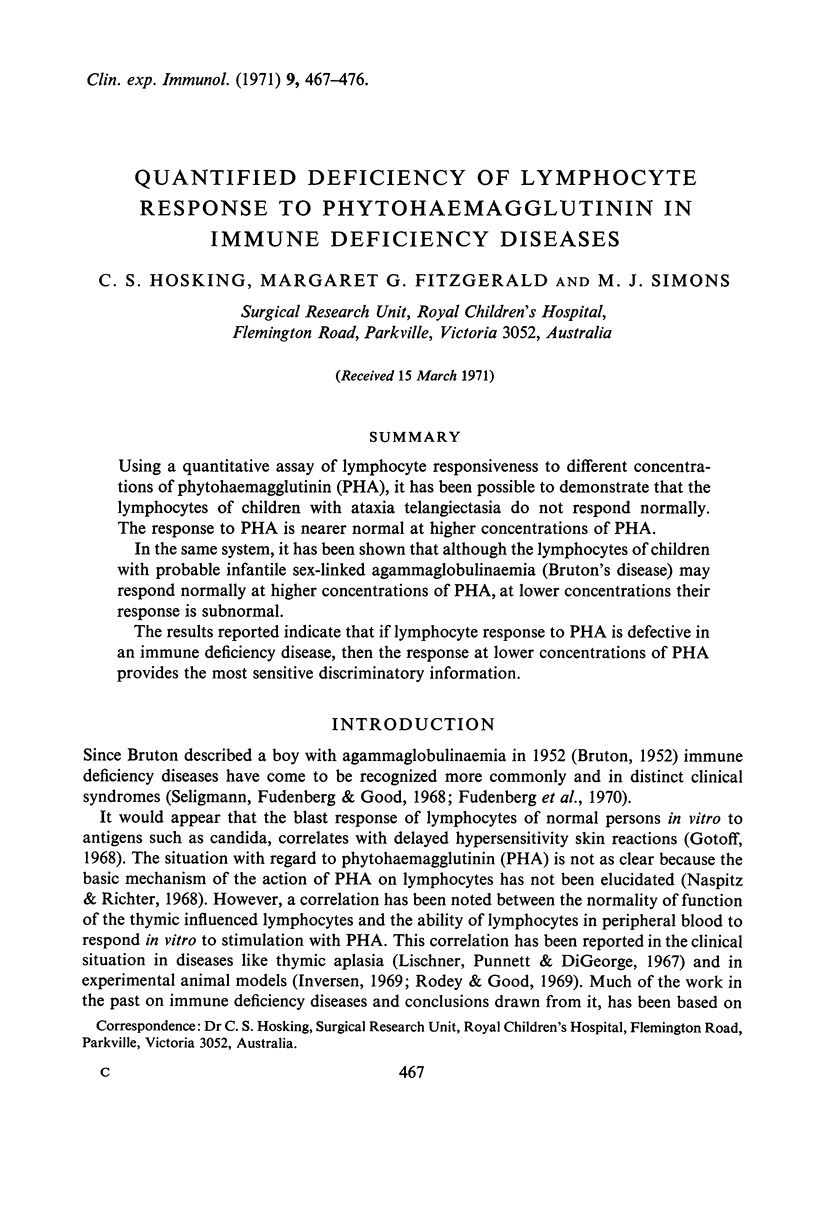
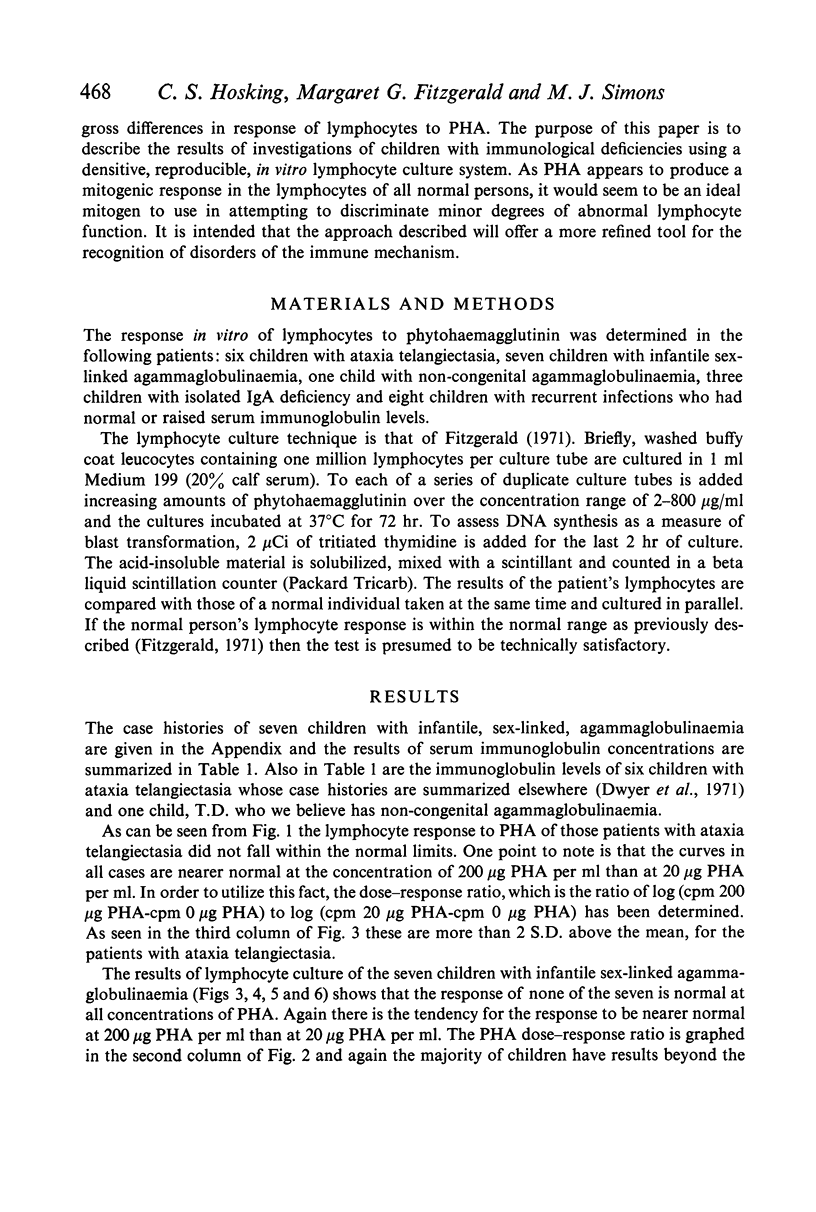
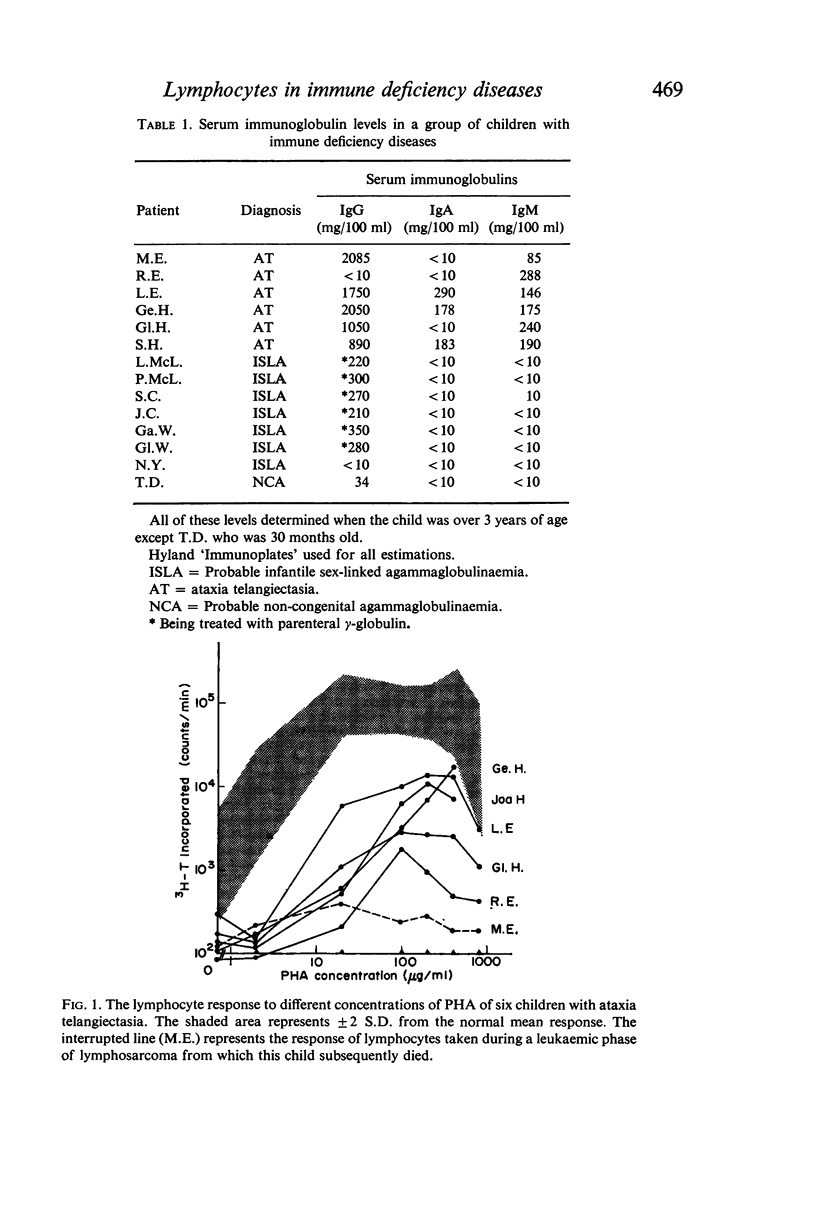
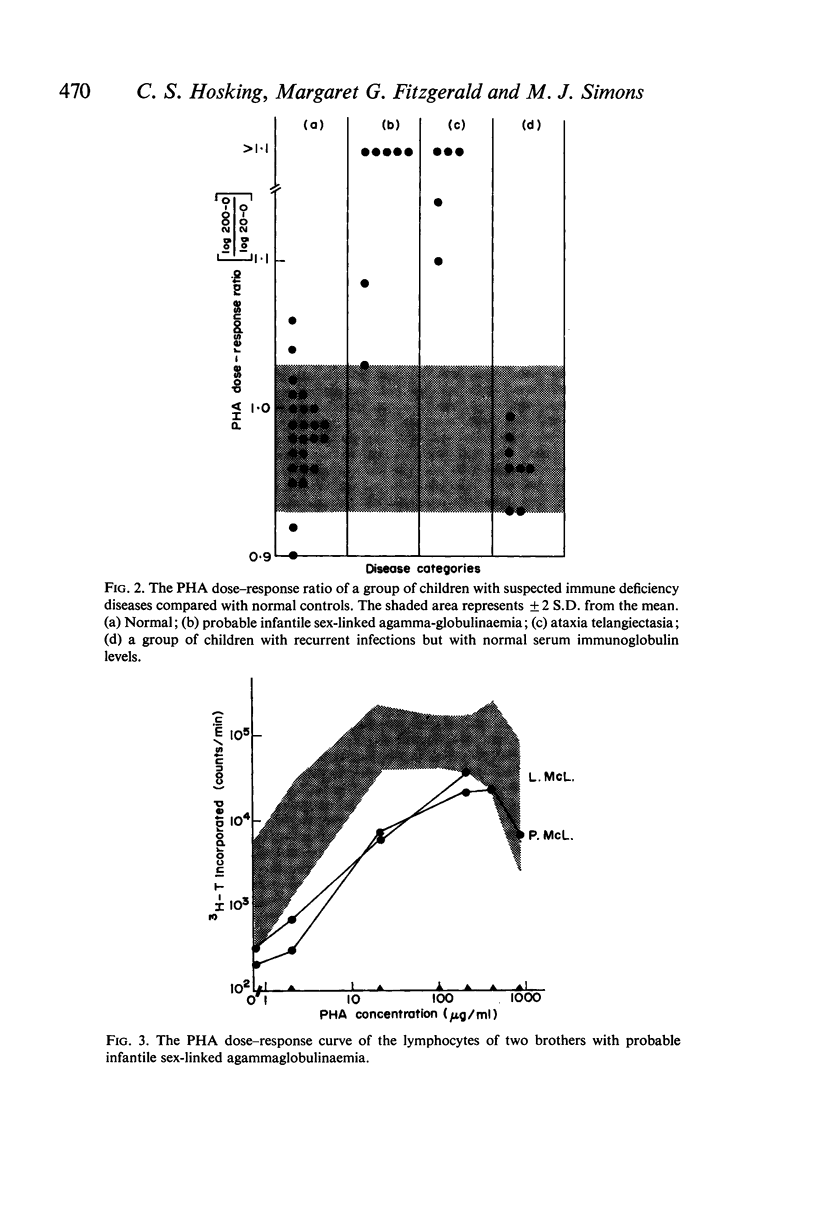
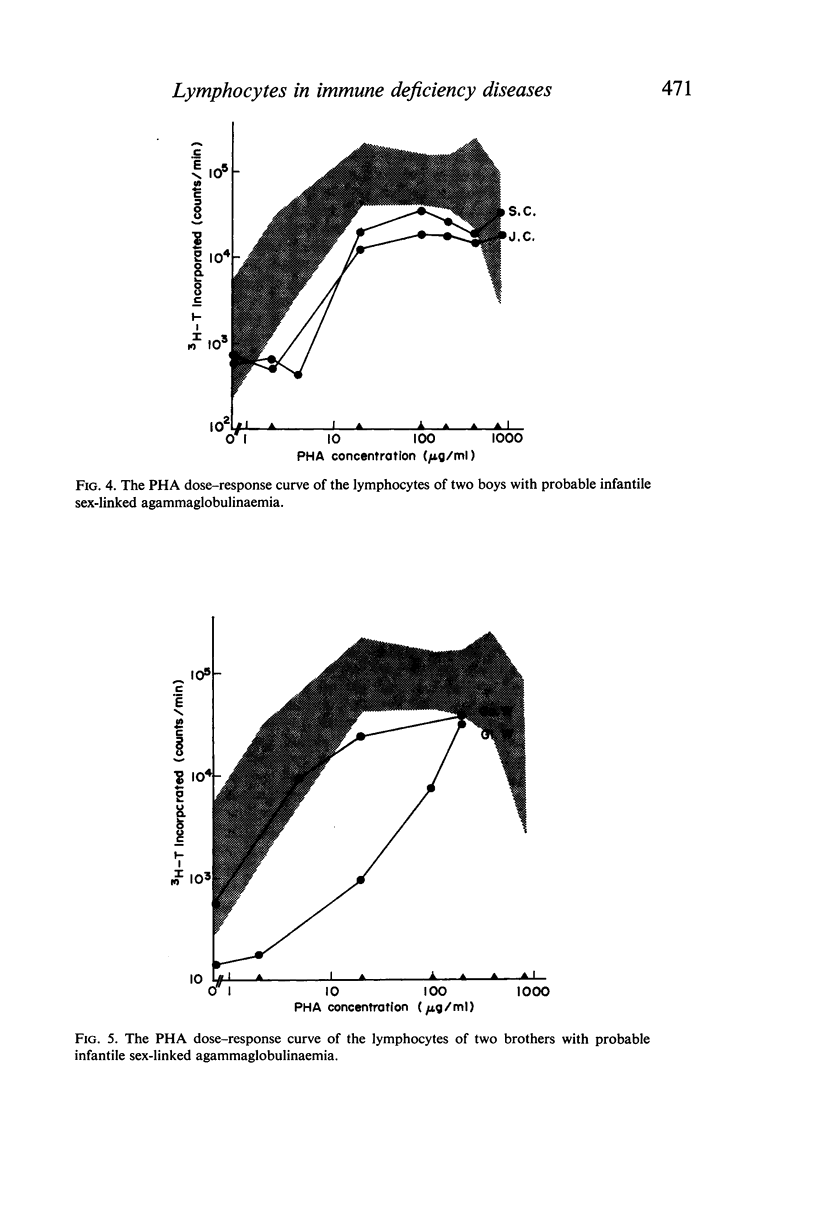
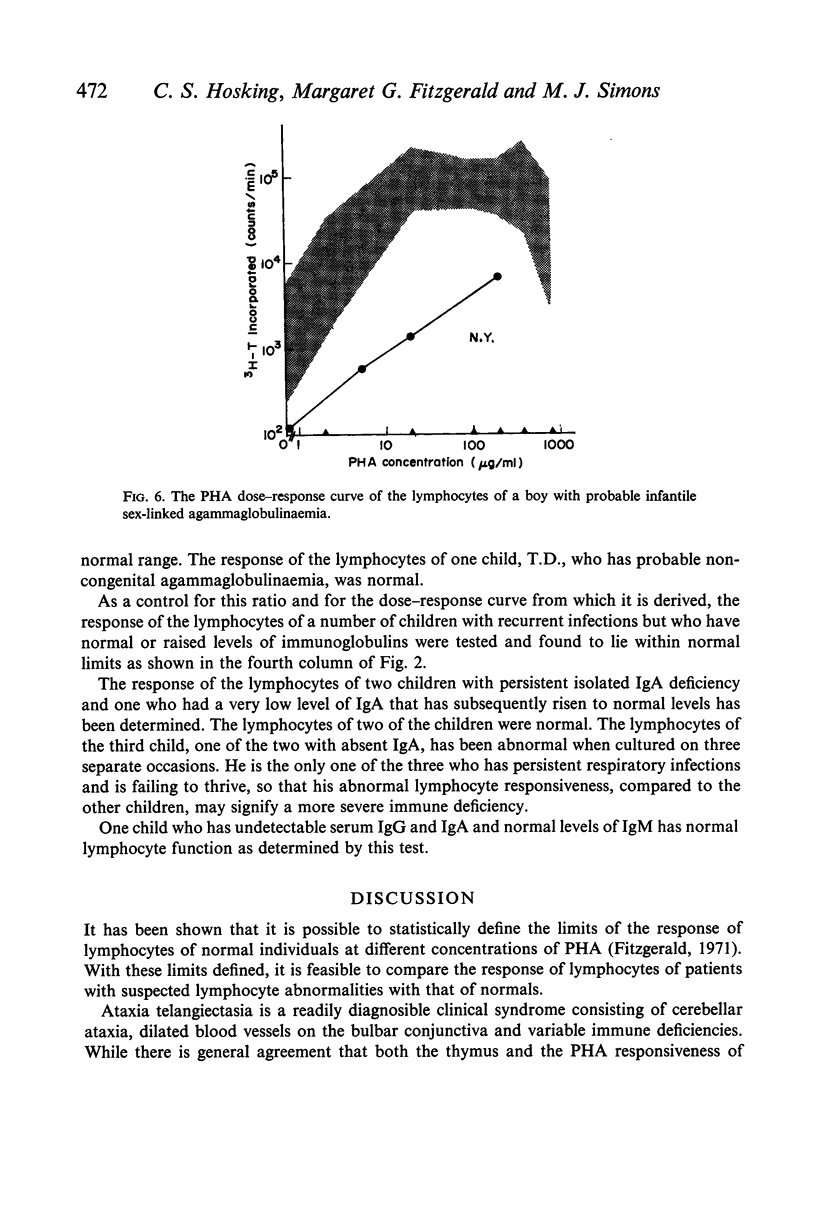
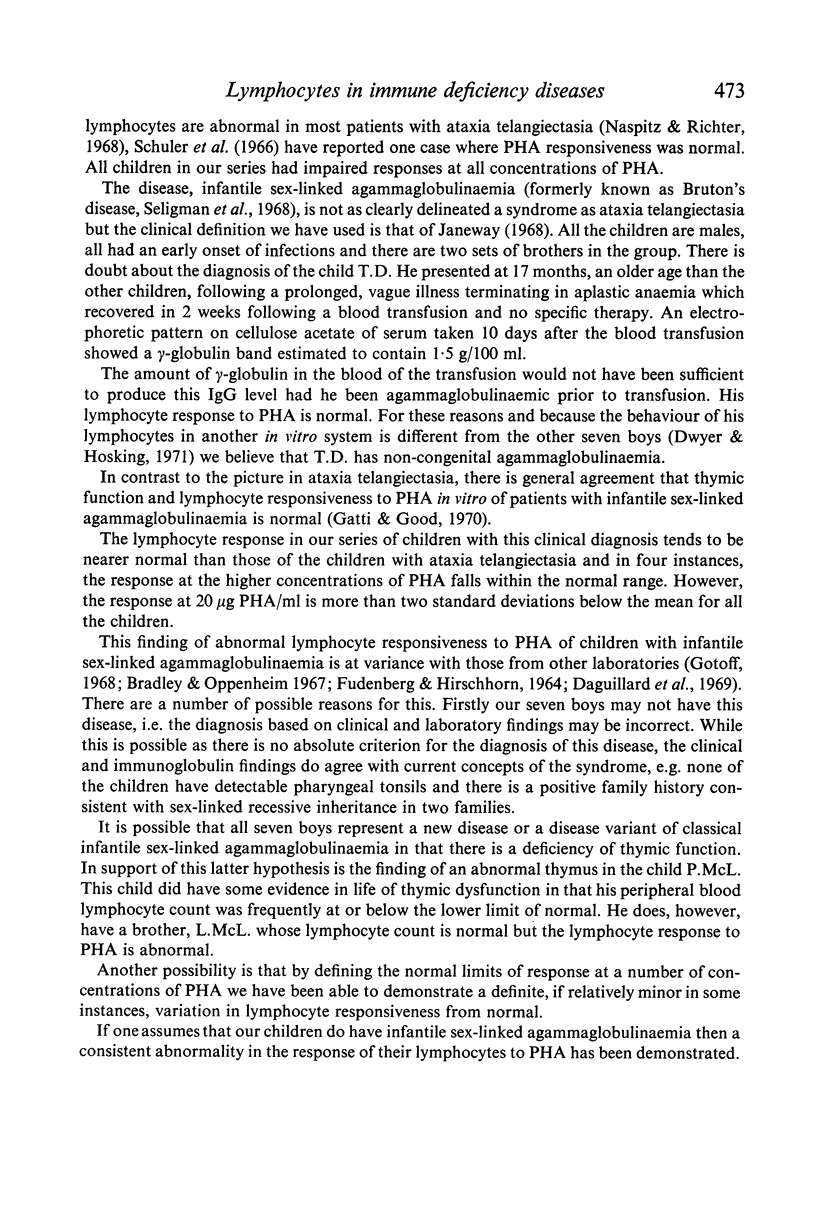
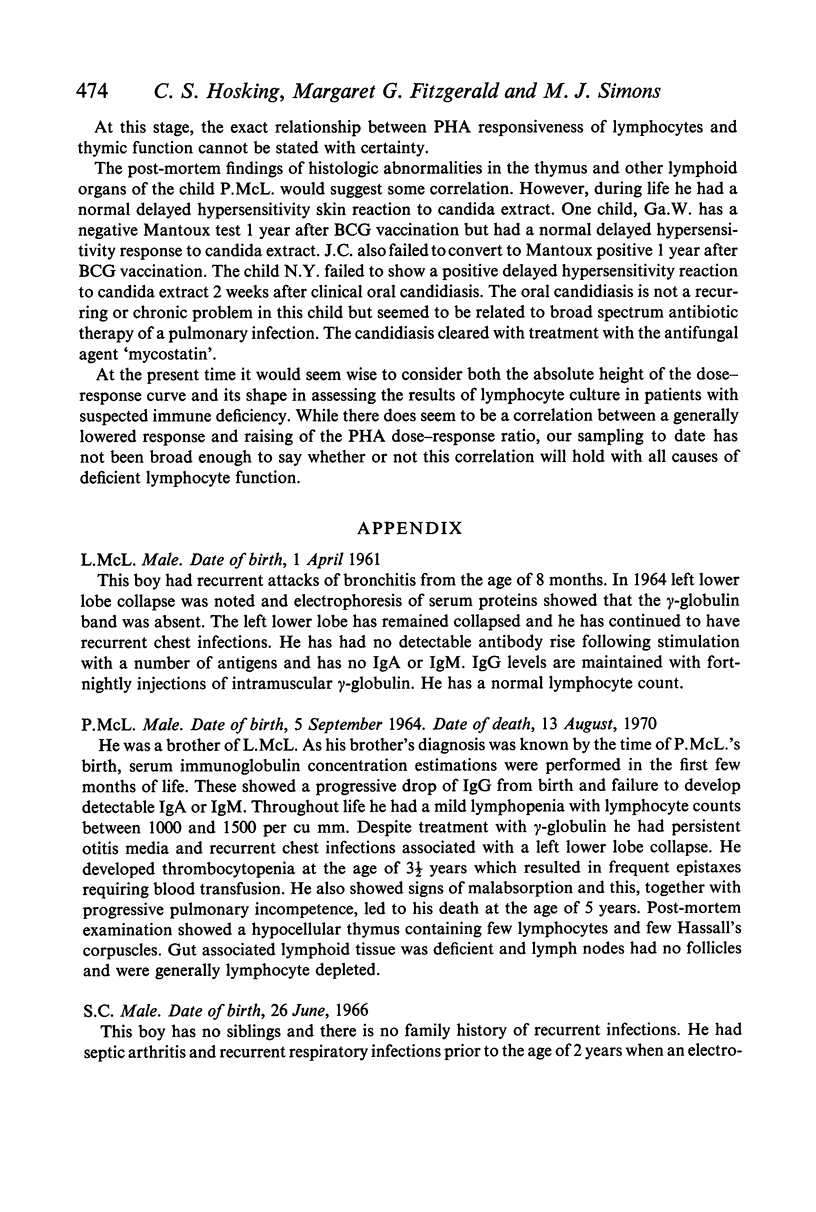
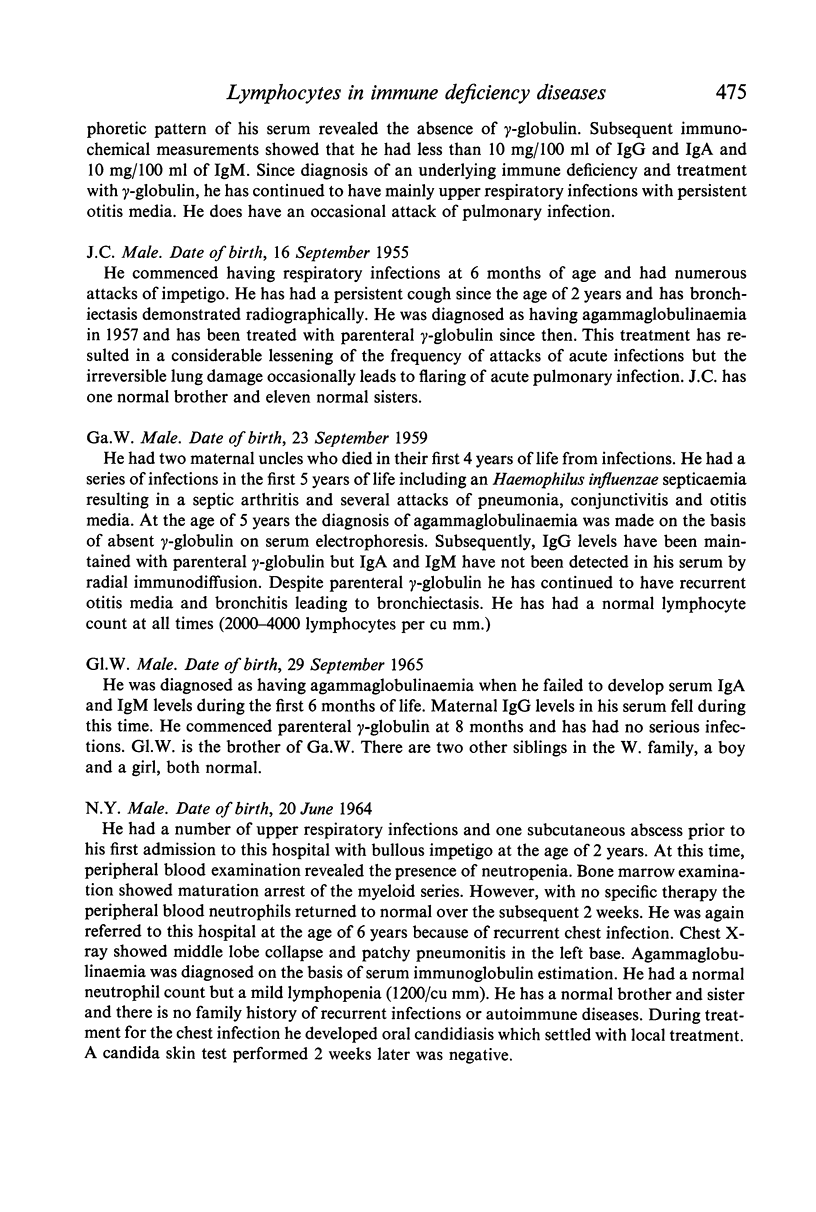
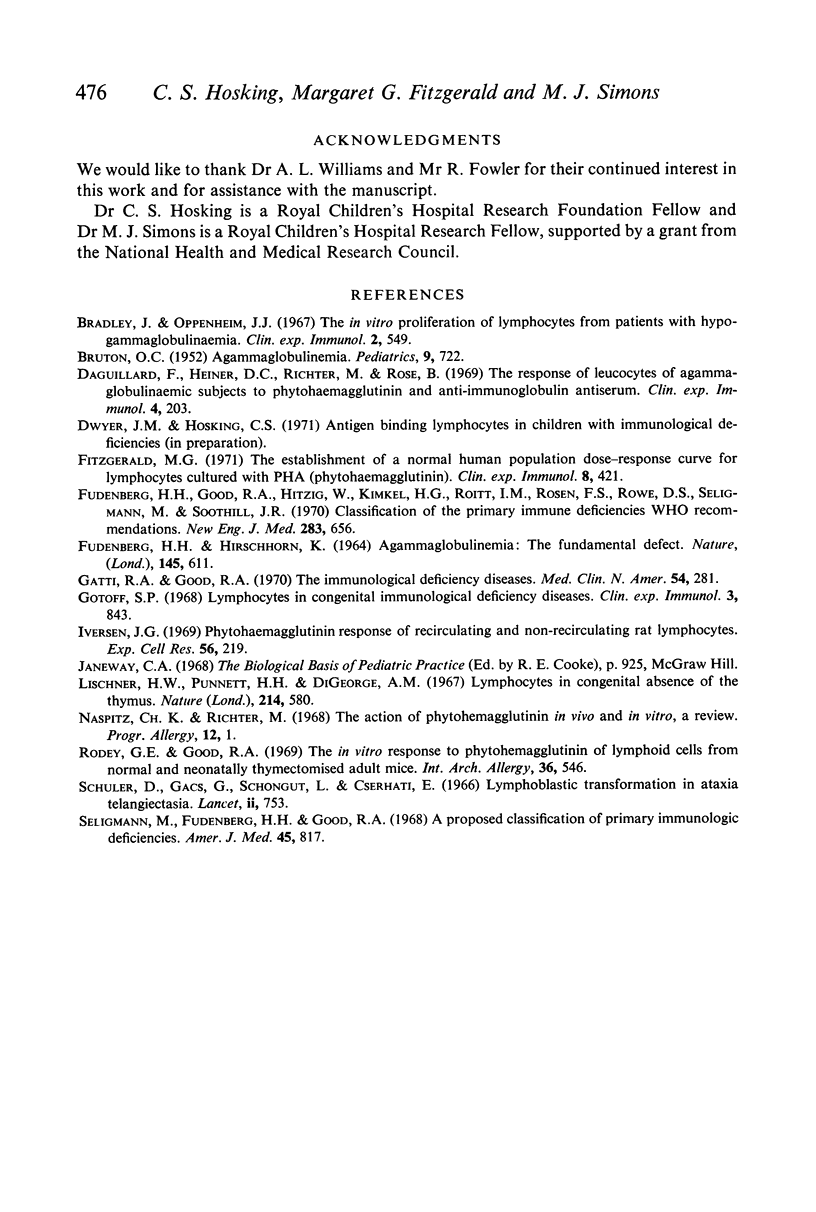
Selected References
These references are in PubMed. This may not be the complete list of references from this article.
- BRUTON O. C. Agammaglobulinemia. Pediatrics. 1952 Jun;9(6):722–728. [PubMed] [Google Scholar]
- Bradley J., Oppenheim J. J. The in vitro proliferation of lymphocytes from patients with hypogammaglobulinaemia. Clin Exp Immunol. 1967 Sep;2(5):549–557. [PMC free article] [PubMed] [Google Scholar]
- Daguillard F., Heiner D. C., Richter M., Rose B. The response of leucocytes of agammaglobulinaemia subjects to phythohaemagglutinin and anti-immunoglobulin antiserum. Clin Exp Immunol. 1969 Feb;4(2):203–211. [PMC free article] [PubMed] [Google Scholar]
- FUDENBERG H. H., HIRSCHHORN K. AGAMMAGLOBULINEMIA: THE FUNDAMENTAL DEFECT. Science. 1964 Aug 7;145(3632):611–612. doi: 10.1126/science.145.3632.611. [DOI] [PubMed] [Google Scholar]
- Fitzgerald M. G. The establishment of a normal human population dose-response curve for lymphocytes cultured with PHA (phytohaemagglutinin). Clin Exp Immunol. 1971 Mar;8(3):421–425. [PMC free article] [PubMed] [Google Scholar]
- Fudenberg H. H., Good R. A., Hitzig W., Kunkel H. G., Roitt I. M., Rosen F. S., Rowe D. S., Seligmann M., Soothill J. R. Classification of the primary immune deficiencies: WHO recommendation. N Engl J Med. 1970 Sep 17;283(12):656–657. doi: 10.1056/NEJM197009172831211. [DOI] [PubMed] [Google Scholar]
- Gajl-Peczalska K., Meuwissen H. J., Good R. A. Pokeweed mitogen induced blastoid transformation in purified and non-purified leukocyte cultures. Int Arch Allergy Appl Immunol. 1969;36(6):546–553. doi: 10.1159/000230775. [DOI] [PubMed] [Google Scholar]
- Gatti R. A., Good R. A. The immunological deficiency diseases. Med Clin North Am. 1970 Mar;54(2):281–307. [PubMed] [Google Scholar]
- Gotoff S. P. Lymphocytes in congenital immunological deficiency diseases. Clin Exp Immunol. 1968 Oct;3(8):843–856. [PMC free article] [PubMed] [Google Scholar]
- Iversen J. G. Phytohemagglutinin response of recirculating and non-recirculating rat lymphocytes. Exp Cell Res. 1969 Aug;56(2):219–223. doi: 10.1016/0014-4827(69)90005-6. [DOI] [PubMed] [Google Scholar]
- Seligmann M., Fudenberg H. H., Good R. A. A proposed classification of primary immunologic deficiencies. Am J Med. 1968 Dec;45(6):817–825. doi: 10.1016/0002-9343(68)90180-0. [DOI] [PubMed] [Google Scholar]


